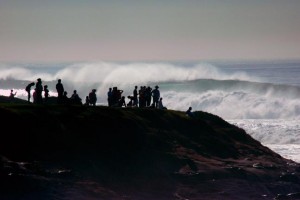
U.S. Wades Deeper into Marine Energy

HONOLULU, July 7 (UPI) — Testing a prototype wave energy device at a U.S. Navy site in Hawaii will provide information needed to determine commercial possibilities, the government said.
The U.S. Energy Department deployed a wave energy prototype dubbed Azura at a test site at Kaneohe Bay off the coast of Oahu, Hawaii. Developer Northwest Energy Innovations, with help from a $5 million federal grant, tested an earlier prototype off the coast of Oregon in 2014.
The government said the pilot project in Hawaii will give federal researchers the chance to monitor a wave energy converter for potential commercial deployment.
[one_fourth]
[/one_fourth][three_fourth_last]
With more than half the U.S. population living within 50 miles of a coastline, the government said marine and hydrokinetic technologies could provide an untapped renewable energy resource.
“With further progress towards commercialization, marine and hydrokinetic technologies could make substantial contributions to our nation’s electricity needs,” the government said.
Overseas, the British government said last year similar technology accounts for “only a tiny” fraction of global power, but is expected to expand more than tenfold by 2040, which much of the new generation coming from within the European Union.
Scottish wave energy company Pelamis in November, however, said it was unable to find the funding necessary to continue with its pioneering technology. Pelamis had been developing a snake-like buoy system that would generate energy from waves.
The U.S. government acknowledged marine and hydrokinetic technology is in its infancy. Developer Northwest Energy Innovations next plans to deploy the technology in deeper test sites with the aim of building a full-scale device capable of generating as much as 1 megawatt of power.
Like us on Facebook for more stories from GephardtDaily.com





